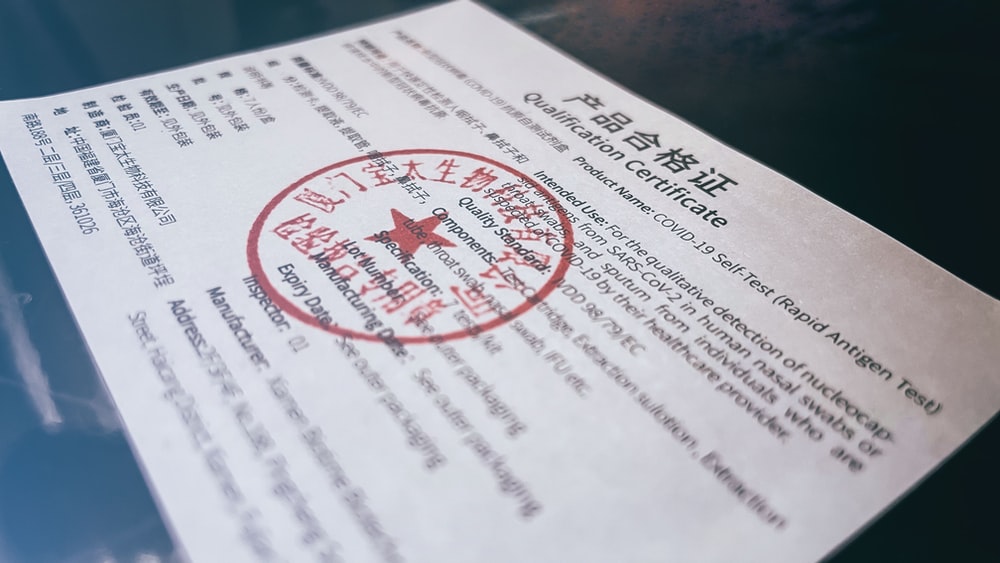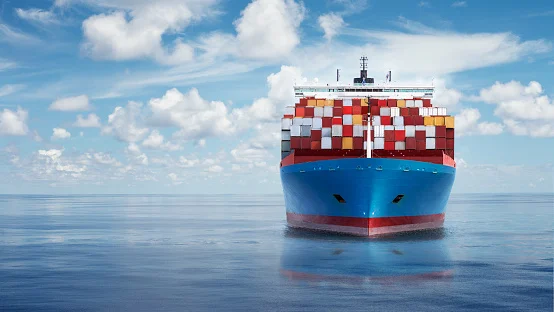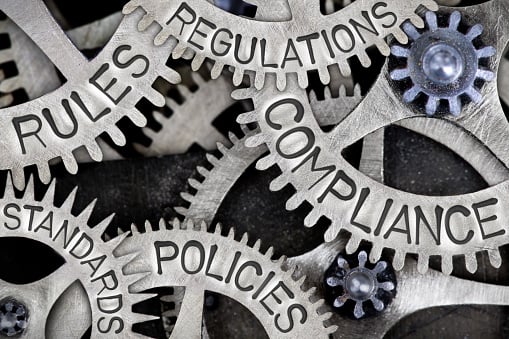Wanna know how to import from China to Canada? This might be your lucky day. I’ve helped HUNDREDS of business owners navigate international trade like a pro. You import the best products!
As a team who has spent DECADES in importation and exportation. We want to share EVERY step we take when importing from China to Canada. NEVER worry about losing profits when shipping products. Optimize your ROUTES and schedule!
Read on to start selling internationally!

What Are the Top Imports From China to Canada?
There are plenty of things that Canada imports from China.
These range from solar panels, clothes, tires, toys, electronics, and building materials. Let me discuss each of these top imports in detail.
Prohibited Imports

With the importation of many things taking place, some items are prohibited. It includes ammunition, explosives, arms, luxury items, or even counterfeit currencies.
They can’t allow anything that seems to be dangerous.
Top Selling Products

Some of the profitable products you can import from China as a Canadian are portable USB desk lamps.
You can also import Mobile phone holders, universal IR remotes, and so on. In short, electronic items fall among the top imports from China to Canada.
How to Start Importing Products?
Before you start the importation process, here are some things you need to consider doing. You may already know these steps if you are running a transaction business for years.
Below are my go-to steps that can help you know the import rules set by the Canadian government.
1. Obtaining a Business Number From CRA

Do you know what it does? Well, it helps you secure a transacting business account. The reason is that you are starting an importation business.
You should register for Canada Revenue Agency program accounts to avoid any mishap during the import process.
Note that you cannot import to Canada without having this number. You can also consider registering for GST/HST, payroll tax, and corporate income tax.
2. Classifying Your Imports
It is the first thing you need to do before doing any import transaction. Most countries worldwide use the harmonized system for standard product classification.
It includes different codes and tariffs as part of import requirements.
Note this number together with the good’s country of origin. These numbers help know the duty rate you need to pay before importing.
With this, you need to know your product’s HS code. You will use it to obtain international trade statistics and file documentation papers.
Being an importer, one must use the HS code to describe and classify the items.
3. Applying for Relevant Inspection, Certificates, and Permits

Like other countries, you need to let the Canadian authorities know the type of goods you need to import.
With this, you need to contact the relevant agency and let them know your intention to import certain goods. It’s advisable to do this since it’s an early application.
Besides, make sure you apply for import inspection in Canada. Also, you should let the authorities know the type of goods you need to import.
They will then go to their database to see if the goods are relevant for import. They will later help you get the relevant documents.
You can use these documents to apply for the certificates and permits to start the trade.
4. Hiring a Licensed Customs Broker
In line with importing goods from China to Canada, you can get help from licensed customs brokers.
A customs broker often knows the import requirements.
So, he will be the right person to help you prepare and submit the necessary documents. It is to help you get the necessary permits from the government for importing goods.
They can also help you transport the packages within the country. It is through different provinces like trucking services.
As an importer, it is advisable to look for a customs broker specializing in the type of cargo you need.
A professional customs broker also specializes in clearing and transporting. They transport different types of cargo such as apparel, perishables, etc.
5. Determining Duties and Taxes

Have you determined duties and taxes? Also, are you sure of the correct tariff classification number?
Then, you need to place the appropriate tariff treatment that applies to your goods.
A particular trade agreement or tariff treatment is a need. It will enable you to enjoy the preferential duty rate. You can check the ‘Canadian Customs Tariff’ Schedule.
This schedule includes ‘Applicable Preferential Tariffs’ and ‘Most-Favoured-Nation (MFN) Tariff’ on the right side.
Moreover, do you know you must also have proof of origin with Canadian imports? That is for a specific trade agreement at the time of importation.
For example, you need to have a valid NAFTA Certificate of origin to request the UST.
You must determine if your goods are subject to the goods and services tax (GST), excise tax, sales tax, excise duty, or any provincial sales tax.
Besides, you need to determine the value of goods you are importing.
You may need to do one more thing, i.e., estimating in advance how much you will need to pay in duty and taxes.
6. Shipping and Reporting Your Goods
With this, you need to place your order and select a shipping method.
You can set the order with the vendor, shipper, or exporter. It will let you choose the mode of shipping you will use.
So it can be through the air, courier service, marine, highway, or rail.
Moreover, it would be best to select the expected CBSA (Canada Border Services Agency) office to release your items.
Thus, another thing you may need to do is report your goods to the CBSA. It is mandatory if you are importing commercial goods.
Whether you use a carrier to transport or transport it yourself, it is mandatory.
At this point, note that government officials may examine your goods. So, make sure you have the necessary accounting documentation with you.
It helps to check whether an importer has complied with the CBSA Canada Border Services Agency) requirements or other government department regulations.
But it is usually free of charge.
However, if a need arises that you need to hire a transport company to move or handle your goods, you may obtain an invoice from that particular company for their services.
7. Getting Your Goods Released

There are two simple methods to get the goods released. You may need to prepare the release and accounting documents while using these options.
You can do it all by yourself or hire a licensed customs broker to handle that on your behalf.
Be keen on the method you will choose to use. The CBSA often assigns a 14-digit transaction number to each shipment.
That helps them classify your goods during the clearance process. These methods are as below.
- Method 1: Make the Payment of Duties After Releasing the Goods
You must take care of the entire accounting and payments of duties to release goods.
- Method 2: Release of Goods Before the Payment of Duties
To enjoy this, you must follow an application process. The ‘Release on Minimum Documentation (RMD)’ lets you do so. Many importers use this option with a high import volume.
8. Note That the CBSA May Verify Your Importations
The CBSA can verify and adjust the origin, value for duty, or tax classification.
They also do so for commercial importations for about four years after importation.
Let the CBSA adjust your accounting document. It will help you obtain a Detailed Change Statement (DAS).
This statement outlines the change, and you will get a month (30 days) to settle any pending duties and taxes.
Being an importer, you or your agent have every right to make requests. The requests would be related to an impartial review.
You can request it against decisions made on taxation, the value of imported goods, or origin.
You need to note that you must make your request as early as possible. It should be no later than 90 days after the date of the initial decision.
Looking for a product to import from china?
AsianDavinci helps buyers source the right product with the best cost.
How Much Will It Cost to Import From China to Canada?

We’ve shipped thousands of goods to Canada, and we know that Shipping cost isn’t something you can ignore when importing. To avoid breaking the bank, here are the things you need to know:
- Shipping express may take 1-4 days.
- Air Freight shipping takes 6-13 days.
- Sea freight from China to Canada takes 29-33 days, which is the cheapest if you can wait.
- Express is the most expensive, and it’s not suitable for large shipments. It may cost around $2,500 to send one container from China to Canada.
To cut down costs, you can;
- Book in advance
- Ship off-peak
- Get all your accounting documentation in order
- Know your HS Codes
- Compare quotes from different providers
- Understand what is in your quote
How Long Will It Take to Import From China to Canada?

It takes 1-2 weeks for regular posts to ship from China to Canada.
Likewise, it would be three days for air express freight and 8-10 days for ocean freight. It is because air freight processes are more complicated than express freight.
Various circumstances may affect these changes. So, you need to check with your logistics provider.
Some things to note, though, are; shipping from China by surface mail may take a long time to get to you. I usually don’t recommend this to my clients, especially for time-sensitive and urgent orders.
Express Shipping Options may take at least three days to pick up. It is quicker than mail, whether TNT, UPS, or DHL.
Know More About Canadian Import Rules and Regulations

You need to understand rules and regulations before you embark on the importation journey. From experience, failure to comply with these regulations will result in paying for hefty fees.
Certain goods may need special measures, permits, or inspections. It will be best if you have the documents at your fingertips to avoid being on the wrong side of the law.
Here a broker can help importers know about these rules and regulations.
They will know whether your goods are subject to special laws and regulations. Would you consider importing commercial goods?
Whether as an individual or a business, you will need to obtain a Business Number (BN).
It’s what the Canada Revenue Agency (CRA) issues. You must also obtain the classification number.
Once you confirm that you may import the goods, you must determine the correct tariff classification number.
Most countries like Canada use the Harmonized System to justify their classification systems.
The import/export account is free of charge, and you can get it in minutes.
How to Find the Best Chinese Supplier for Your Import Business?

As an expert in the import Industry, we know exactly how to find the best Chinese suppliers. In whichever way you will find a reliable supplier, you’ll need to be careful of unreliable people. Let’s look at some of the ways that will help you to get the right supplier.
1. B2B Marketplaces
Popular websites like Made in China, Global Sources, and Alibaba are a click away. It starts with finding your best factory supplier.
With this, you need to be extra careful to avoid getting scammed your hard-earned money.
These B2B marketplaces may not be that safe.
2. Sourcing Agents
You may need a China sourcing agent when you need to source products. It will help you get goods with the exact technical specifications.
It sounds like a good plan since professional agents like AsianDavinci in China visit factories to inspect quality controls.
They have a good relationship with suppliers. They revisit the factory to check on raw materials and examine the production process.
What’s more, they even review the first few batches for quality.
3. Use Search Engines
Chinese suppliers often set up their company websites. Moreover, they also stay active on social media.
Thus, you can use Google Key terms to find relevant supplier pages.
You can find several directories and B2B websites with a simple Google search.
Remember, most Chinese manufacturers use Baidu. All you need to do is use a translation tool to find leads.
With that, you will see the suppliers you can find on Chinese business directories. After that, you need to follow up if they look genuine.
Also, you may find crucial information on whether the supplier is true or has been into any legal disputes.
FAQs

Final Thoughts!

So, that’s all about importing goods to Canada from China.
If you are an importer or want to start importing from China, you must get your facts straight before the cargo goes out.
You need to gather as much information as possible. Know about the cost, how long the shipping will take, rules and regulations, and many other things.
You also need to know the best trading companies and suppliers for importing goods.
With all this info, you can kick start your importation business with so much ease. You can also consider hiring a customs broker to help you throughout the importing process.
What’s more,sourcing agents like AsianDavinci can streamline the whole importation process.
Importation from China to Canada is well taken care of for you. They can offer relevant information to guide you throughout the process.
